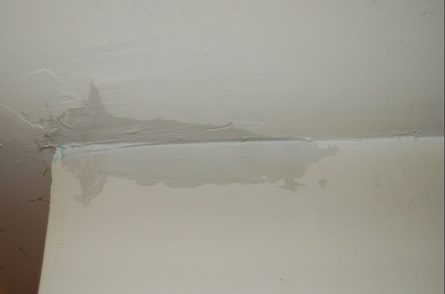Do's & Don'ts of Water Damages.
Do's & Don'ts of Water Damages.
Blog Article
Listed here in the next paragraph you will discover additional brilliant ideas about Simple Solutions To Preventing Fire And Water Damage To Your Home.

Water gives life, water invasion on parts where it's not intended to be can result in damage. Homes with water damages smell old and also stuffy.
Water can come from several sources such as hurricanes, floodings, burst pipelines, leaks, and also sewer concerns. In case you experience water damage, it would certainly be excellent to know some safety and security precautions. Below are a few standards on how to take care of water damages.
Do Prioritize House Insurance Policy Protection
Water damages from flood as a result of hefty winds is seasonal. You can also experience an unexpected flooding when a defective pipeline instantly ruptures into your home. It would certainly be best to have house insurance coverage that covers both disasters such as all-natural calamities, as well as emergency situations like broken plumbing.
Do Not Neglect to Turn Off Utilities
This reduces off power to your entire residence, protecting against electric shocks when water comes in as it is a conductor. Do not neglect to transform off the major water line shutoff.
Do Stay Proactive and also Heed Weather Signals
Storm floods can be extremely unforeseeable. Remain positive and prepared if there is a background of flooding in your area. Listen to emptying cautions if you live near a lake, river, or creek . Secure prized possessions from the very beginning and also cellar, after that placed them on the greatest possible level. Doing so decreases possible home damages.
Don't Disregard the Roof
You can prevent rain damage if there are no holes and leakages in your roofing. This will certainly protect against water from flowing down your wall surfaces as well as saturating your ceiling.
Do Focus On Tiny Leaks
A burst pipeline doesn't happen over night. Typically, there are red flags that show you have actually weakened pipes in your house. For example, you might see bubbling paint, peeling wallpaper, water streaks, water discolorations, or dripping sounds behind the walls. At some point, this pipeline will certainly break. Preferably, you should not wait for things to escalate. Have your plumbing repaired before it leads to large damages.
Do Not Panic in Case of a Ruptured Pipeline
When it comes to water damages, timing is vital. Hence, if a pipeline bursts in your home, right away shut off your main water shutoff to cut off the source. Call a respectable water damages restoration expert for support.
Water gives life, water intrusion on parts where it's not intended to be can result in damages. Houses with water damages scent old and moldy.
Water damage from flood dues to heavy winds is seasonal. You might discover bubbling paint, peeling wallpaper, water streaks, water discolorations, or dripping noises behind the wall surfaces. When it comes to water damage, timing is vital.
Some Do's & Don't When Dealing with a Water Damage
DO:
Make sure the water source has been eliminated. Contact a plumber if needed. Turn off circuit breakers supplying electricity to wet areas and unplug any electronics that are on wet carpet or surfaces Remove small furniture items Remove as much excess water as possible by mopping or blotting; Use WHITE towels to blot wet carpeting Wipe water from wooden furniture after removing anything on it Remove and prop up wet upholstery cushions for even drying (check for any bleeding) Pin up curtains or furniture skirts if needed Place aluminum foil, saucers or wood blocks between furniture legs and wet carpet Turn on air conditioning for maximum drying in winter and open windows in the summer Open any drawers and cabinets affected for complete drying but do not force them open Remove any valuable art objects or paintings to a safe, dry place Open any suitcases or luggage that may have been affected to dry, preferably in sunlight Hang any fur or leather goods to dry at room temperature Punch small holes in sagging ceilings to relieve trapped water (don't forget to place pans beneath!); however, if the ceiling is sagging extremely low, stay out of the room and we'll take care of it DO NOT:
Leave wet fabrics in place; dry them as soon as possible Leave books, magazines or any other colored items on wet carpets or floor Use your household vacuum to remove water Use TV's or other electronics/appliances while standing on wet carpets or floors; especially not on wet concrete floors Turn on ceiling fixtures if the ceiling is wet Turn your heat up, unless instructed otherwise

As a devoted person who reads about 5 Home Safety Tips To Reduce The Risk Of Fire And Water Damage, I imagined sharing that chunk was a good idea. Make sure you take a moment to distribute this blog if you liked it. Thanks a lot for your time spent reading it.
Report this page